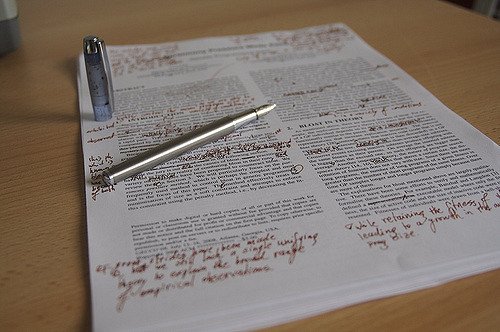Having to choose between that and which is one of those tricky little grammar rules that used to trip me up constantly as I wrote.
To spare you the same aggravation, I’m sharing the words’ definitive usage guidelines:
1. That
That is used solely in restrictive clauses, meaning it introduces specific, essential information in a sentence. As a general rule of thumb, that is usually used in sentences without commas. For example:
The cat that was on the porch slept all day.
The shoes that she bought yesterday were very expensive.
Both of these sentences contain restrictive dependent clauses, giving us specific information about what is happening. The first sentence “restricts” the subject “cat.” It is used to separate the cat on the porch from other cats that may be in the bedroom or on top of the refrigerator. Put another way, you could say that “only the cat on the porch slept all day.”
Same scenario in the second sentence, where that restricts the shoes she bought to yesterday only, and doesn’t include any of the shoes she may have bought on any other day.
“”
2. Which
Which is used to introduce a non-restrictive clause, a clause that gives us extra information that may be interesting or incidental but does not define the subject. A fun way to remember this: which clauses can “fly away like a witch,” meaning they can be cut from the sentence without changing the meaning. In order to form a restrictive clause, use which and insert two commas around the clause.
The cat, which was on the porch, slept all day.
This sentence tells us essentially the same thing, a cat is sleeping, with one key difference: the cat just happened to be on the porch. Adding the non-restrictive clause gives us extra information about the cat – that he was on the porch – but it does not alter the meaning of the sentence, “The cat slept all day.” Notice the commas that bracket off this new information.
And you can reconstruct the form in the second example in the same way:
The shoes, which she bought yesterday, were very expensive.
The reader knows that someone bought shoes; the fact that she bought the shoes yesterday is just an extra piece of information bracketed off from the rest of the sentence. Again, we have commas separating the non-restrictive clause from the rest of the sentence.
As a general note, that can NEVER be used in a non-restrictive clause. To say “The cat, that was on the porch, slept all day,” is incorrect because of the comma usage.
Also, when speaking of people, always use who rather than that or which.
3. Combining the Two
Don’t be afraid to combine that and which once you have the correct usage down. For example:
The shoes that she bought yesterday, which cost more than $500, were very chic.





